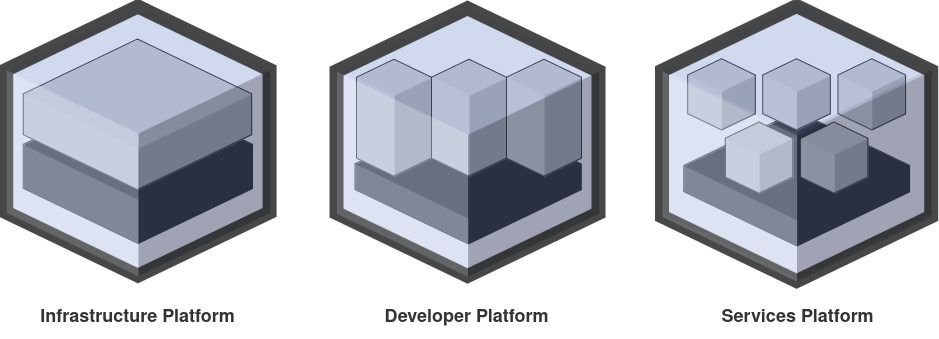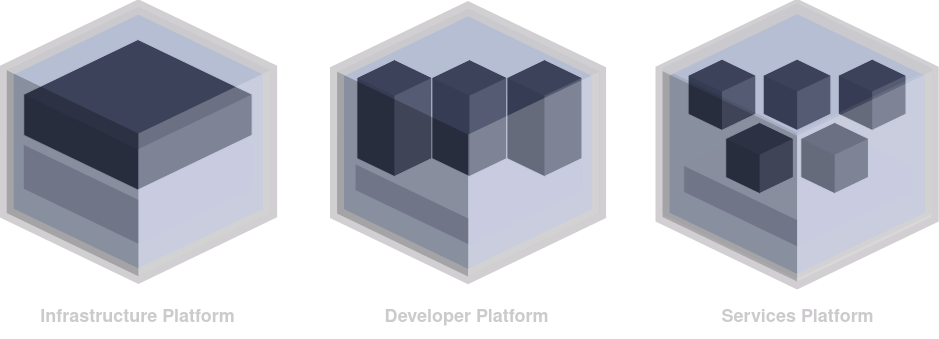Types of Platforms
The Platform Specification is designed to address the diverse needs of modern cloud and enterprise ecosystems by providing a structured approach to defining and managing platforms. Platforms are the foundation of software delivery, and they come in various forms depending on their focus and purpose. This page defines and documents the three primary types of platforms: Infrastructure Platforms, Developer Platforms, and Services and SaaS Control Plane Platforms.
Each type serves a distinct role in the ecosystem, yet they are often interconnected, creating a cohesive foundation for building, deploying, and managing modern applications.


Infrastructure Platforms
Infrastructure Platforms are foundational platforms that manage compute, storage, networking, and other essential infrastructure resources. They also provide core, shared, and centralized services that support higher-layer platforms, such as Developer platforms and SaaS control planes. Infrastructure Platforms abstract the complexity of resource management and ensure scalability, consistency, and operational efficiency.
Focus: Manage and provide foundational resources and services for building cloud-native solutions.
Target Users: Operations teams, platform engineers, and cloud administrators.
Use Cases:
- Hosting workloads for application platforms and business applications.
- Supporting multi-cloud or hybrid-cloud environments.
- Providing the foundational layer for all other platform types.
Developer Platforms
Developer Platforms are designed to empower developers by simplifying the application lifecycle. They provide tools, services, and workflows that abstract infrastructure complexity, enabling developers to focus on building and delivering business-critical applications.
Focus: Simplify and accelerate software development and deployment by providing tools, frameworks, and services.
Target Users: Developers, DevOps teams, and application engineers.
Use Cases:
- Providing developers with tools to build and deploy applications quickly.
- Ensuring consistency across application environments and teams.
- Accelerating innovation by abstracting infrastructure complexity.
Services and SaaS Control Plane Platforms
Services and SaaS Control Plane Platforms provide centralized tools for managing multi-tenant environments. These platforms are essential for SaaS providers or organizations managing independent tenants, where each tenant represents an isolated customer or business unit.
Focus: Facilitate the creation, management, and scaling of multi-tenant services or SaaS products.
Target Users: SaaS providers, platform-as-a-service providers, and product teams.
Use Cases:
- Managing SaaS environments with thousands of independent customers.
- Centralizing service delivery for internal or external tenants.
- Offering pay-as-you-go pricing and subscription-based models.
Summary
Each platform type serves a unique purpose while contributing to the broader ecosystem. The Platform Specification empowers organizations to define and manage Infrastructure Platforms, Developer Platforms, and Services Platforms, fostering innovation, consistency, and scalability across all layers of the stack.